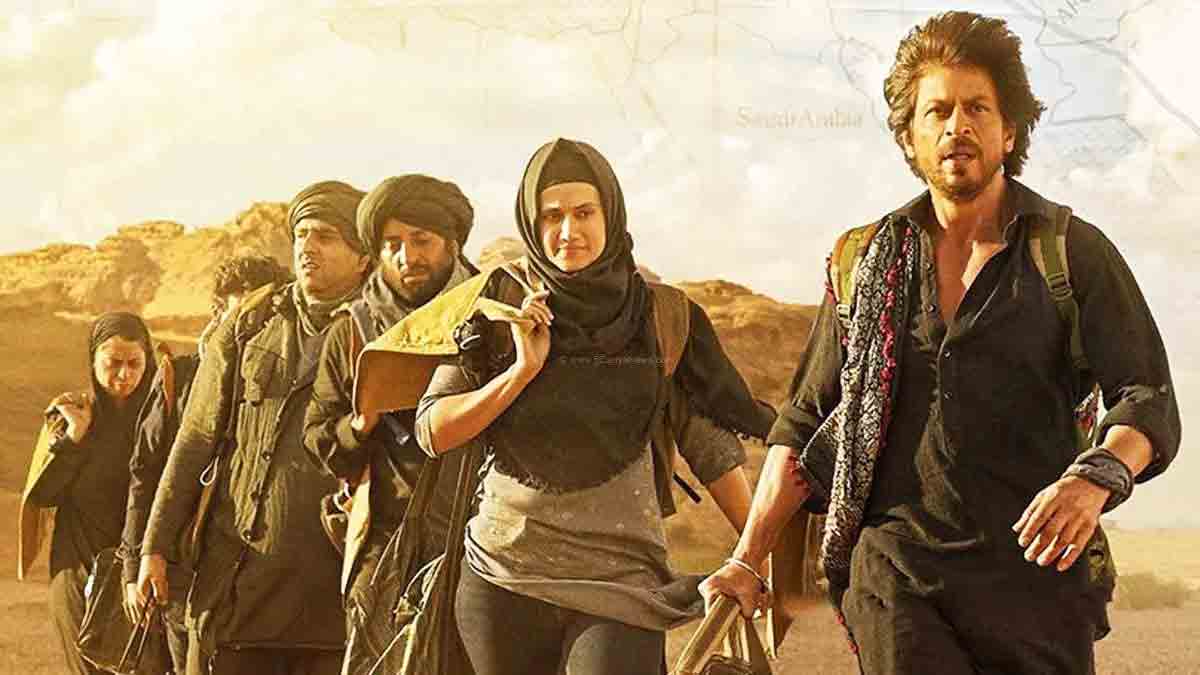“Dunki,” released in cinemas on December 21 and is receiving immense praise from the critics and audience alike. The film featuring Shah Rukh Khan, explores the concept of the “donkey route,” a common yet illegal method of immigration used to enter countries like the United States, UK, and Canada. The film, directed by Raj Kumar Hirani and starring Taapsee Pannu, Vicky Kaushal, and Boman Irani, portrays individuals compelled by the promise of a better life, opportunities, and living standards, taking the challenging route to settle in ‘first world’ countries. The ‘donkey route,’ particularly popular among youth in Punjab, Haryana, and Gujarat, involves significant risks, including navigating through forests, rivers, and seas while avoiding authorities, reflecting the pursuit of the American Dream despite the associated threats and challenges.
Shah Rukh Khan, during a recent event in Dubai, provided insight into the title’s meaning, stating, “Dunki is an illegal journey that many people undertake to leave their country and cross borders worldwide. It is referred to as Donkey travels.”
‘DONKEY ROUTE’ Explained
‘Dunki,’ a regional pronunciation of donkey, stems from a Punjabi idiom meaning “hopping from one place to another.” It symbolizes a perilous immigration route chosen by hundreds of thousands of Indians seeking entry into countries such as the US, the UK, or Europe.
Data from the US Customs and Border Protection reveals that approximately 42,000 migrants from India illegally crossed the southern border between October 2022 and September 2023. Since November 2022, about 97,000 Indians attempted illegal entry into the US and were apprehended by American authorities. Notably, individuals from Punjab predominantly aim for Canada, while those from Haryana often seek the US as their primary destination.
Embarking on the illegal journey known as the “donkey route” can be financially burdensome, with costs ranging from Rs 15-40 lakhs, and in some cases, reaching as high as Rs 70 lakhs. The expense is inversely proportional to the difficulty of the journey, with fees of approximately Rs 15 lakhs for Portugal, Rs 25 lakhs for Germany, and Rs 45 lakhs for the US.
The first Leg!
The initial stage of the widely chosen “donkey route” from India involves reaching a Latin American country such as Ecuador, Bolivia, Guyana, Brazil, or Venezuela. The preference for Latin American countries lies in the ease of access for Indians, as these nations often offer visa on arrival or readily issue tourist visas to those needing pre-arrival visas. Additionally, the agents overseeing the illicit migration operations are typically situated in these countries, establishing connections for unlawful trafficking.
An alternative approach involves obtaining a direct visa for Mexico from Dubai, although direct entry into Mexico is deemed risky due to potential arrest by local authorities. Therefore, most agents prefer landing clients in a Latin American country before transporting them to Colombia.
After arriving in Colombia, migrants proceed to Panama, where the route entails crossing the perilous Darién Gap—a challenging forest between the two countries. The dangers encompass a lack of clean water, encounters with wild animals, and the presence of criminal gangs, leading to potential robberies and even assaults. In one reported incident, Jitendra and his group from Haryana were stripped of their money, phones, clothes, and shoes while navigating the forest, having to endure barefoot trekking in the cold and snow.
This leg of the journey spans eight to ten days, and in cases of mishaps or migrant deaths, there is no means of sending the body back home.
An alternative, safer route from Colombia involves avoiding Panama’s treacherous forests. This path commences from San Andrés, where fishing boats transport illegal migrants to Fisherman’s Cay, approximately 150 kilometers from San Andrés. From there, they transfer to another boat to progress towards Mexico.
Upon reaching Panama, migrants proceed to Mexico, a pivotal segment of the journey that entails evading government agencies. The 3,140-km border between the US and Mexico features fencing, which migrants must navigate, while some cross the hazardous Rio Grande River. However, more migrants are detained after crossing the border than during the fence-crossing or sea entry.
Additionally, some migrants opt for a route through Europe instead of transiting through a Latin American country. Although Europe to Mexico is a more straightforward path, it is closely monitored by authorities.
Despite the formidable challenges and perils associated with the route, the “Dunki method” remains the preferred approach for illegal immigration in Punjab and Haryana, extending to Uttar Pradesh, Himachal Pradesh, and Gujarat. A vast network of visa agencies, often operating with varying degrees of legality and sometimes linked to criminal smuggling networks across Europe, promotes the “donkey route.”
In the recent high-profile murder case involving Sukhdev Singh Gogamedi, the chief of Rashtriya Rajput Karni Sena, which triggered protests in Rajasthan, Madhya Pradesh, and other states, the alleged mastermind, Rohit Godara, employed the ‘Dunki’ method to flee to the United States.
Godara, hailing from Lunakaran in Bikaner, is suspected to have utilized the donkey route to enter the US before making his way to Canada. Notably, Godara is a notorious criminal with over 32 cases registered against him at various police stations in India.










